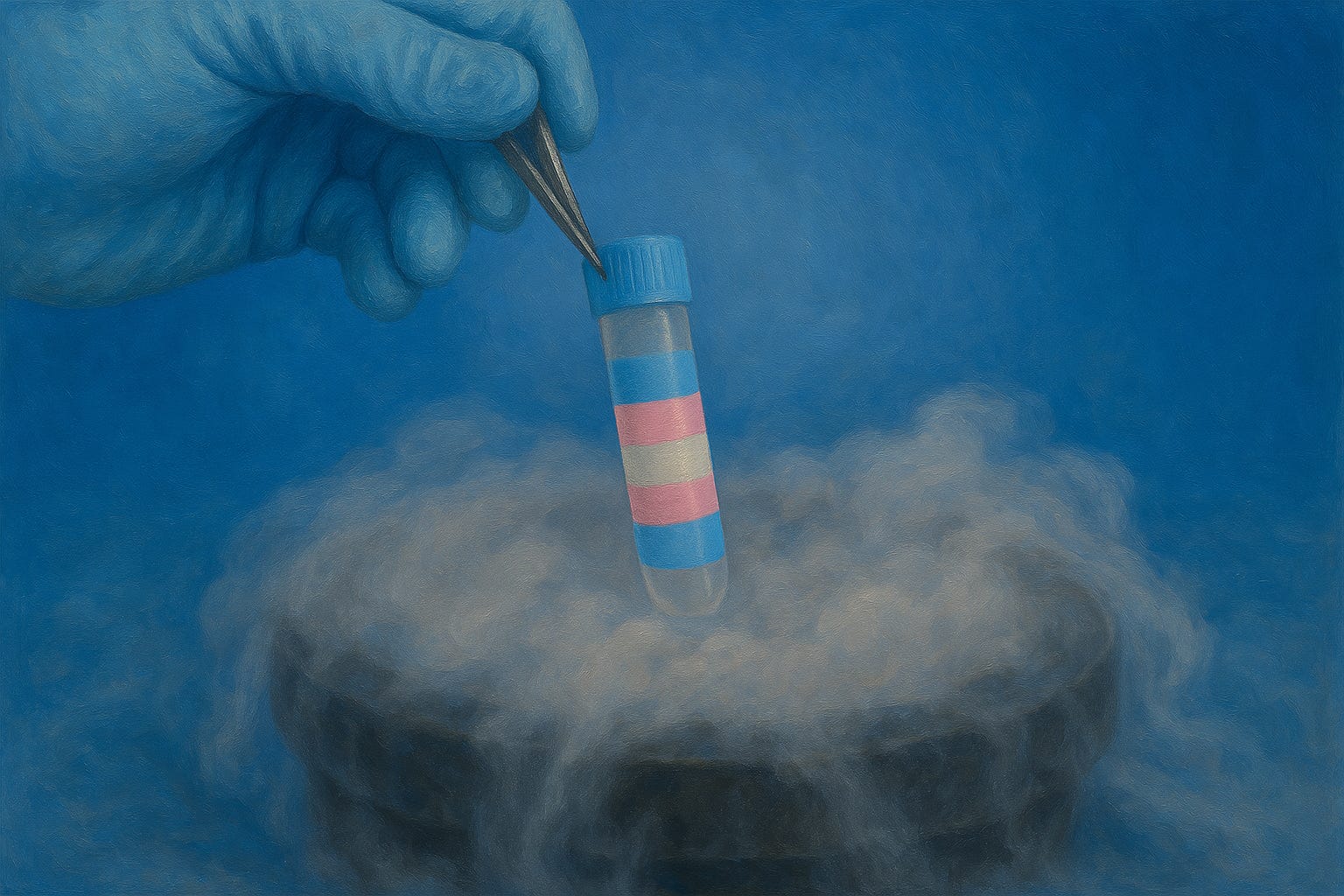Fertility Preservation in Gender-Dysphoric Youth: A Closer Look at the Evidence
Fertility preservation to mitigate the reproductive harms of puberty blockers and cross-sex hormones is based more on hopeful speculation than sound science.
Reality’s Last Stand is a reader-supported publication. Please consider becoming a paying subscriber or making a one-time or recurring donation to show your support.
About the Author
Dr. Colin Wright is the CEO/Editor-in-Chief of Reality’s Last Stand, an evolutionary biology PhD, and Manhattan Institute Fellow. His writing has appeared in The Wall Street Journal, The Times, the New York Post, Newsweek, City Journal, Quillette, Queer Majority, and other major news outlets and peer-reviewed journals.
Over the past several decades, significant advances in assisted reproductive technologies (ART) and cryopreservation have offered new hope to individuals facing the threat of infertility—particularly pediatric cancer patients undergoing gonadotoxic treatments like chemotherapy and radiation. These techniques, developed to preserve the possibility of biological parenthood in those with a physical disease, are now being extended to a new and growing group: children and adolescents diagnosed with gender dysphoria and undergoing so-called gender-affirming treatments (GAT).
A recent paper published in Frontiers in Endocrinology by Michael K. Laidlaw, Jennifer Lahl, and Angela Thompson critically examines this application of fertility preservation, highlighting the biological limitations, ethical concerns, and the experimental nature of these interventions when applied to otherwise physically healthy youth. The authors argue that using fertility preservation to mitigate the reproductive harms of puberty blockers and cross-sex hormones is based more on hopeful speculation than sound science—and that it may ultimately cause more harm than good.
Keep reading with a 7-day free trial
Subscribe to Reality’s Last Stand to keep reading this post and get 7 days of free access to the full post archives.







